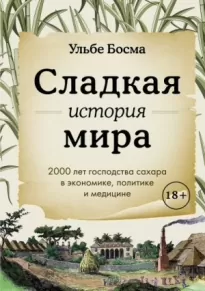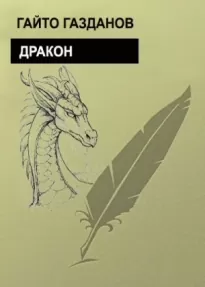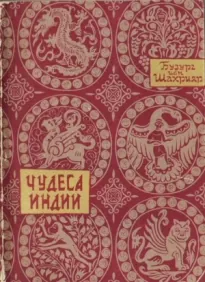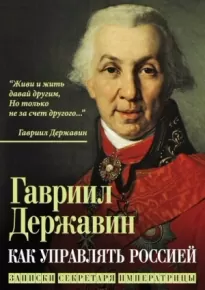Сладкая история мира. 2000 лет господства сахара в экономике, политике и медицине

- Автор: Ульбе Босма
- Жанр: Научная литература / Исторические приключения / История: прочее
Читать книгу "Сладкая история мира. 2000 лет господства сахара в экономике, политике и медицине"
4. Наука и пар
1 Plinio Mario Nastari, «The Role of Sugar Cane in Brazil’s History and Economy» (PhD diss., Iowa State University, 1983), 43; Gilberto Freyre, New World in the Tropics: The Culture of Modern Brazil (New York: Alfred A.Knopf, 1959), 72.
2 Alex van Stipriaan, Surinaams Contrast: Roofbouw en Overleven in een Caraïbische Plantagekolonie 1750–1863 (Leiden: KITLV, 1993), 139. По большей части увеличение производительности труда – и прекращение ее снижения в Суринаме и на Барбадосе – произошло после 1790 года, что совпало с внедрением таитянского сахарного тростника. Ward, British West Indian Slavery, 7, 91, 132, 190; David Eltis, Frank D.Lewis, and David Richardson, «Slave Prices, the African Slave Trade, and Productivity in the Caribbean, 1674–1807,» Economic History Review 58, no. 4 (2005): 684–685; Alex van Stipriaan, «The Suriname Rat Race: Labour and Technology on Sugar Plantations, 1750–1900,» New West Indian Guide 63, nos. 1–2 (1989): 96–97, 101–102.
3 См.: Even Beckett, Empire of Cotton: A Global History (New York: Alfred A.Knopf, 2014).
4 Padraic X.Scalan, «Bureaucratic Civilization: Emancipation and the Global British Middle Class,» in The Global Bourgeoisie: The Rise of the Middle Classes in the Age of Empire, ed. Christof Dejung, David Motadel, and Jürgen Osterhammel (Princeton, NJ: Princeton University Press, 2019), 145.
5 Dorothy Burne Goebel, «The ‘New England Trade’ and the French West Indies, 1763–1774: A Study in Trade Policies,» William and Mary Quarterly 20, no. 3 (1963): 337.
6 Franklin W.Knight, «Origins of Wealth and the Sugar Production in Cuba, 1750–1850,» Hispanic American Historical Review 57, no. 2 (1977): 249.
7 Eltis, Lewis and Richardson, «Slave Prices,» 683–684.
8 См.: William Belgrove, A Treatise upon Husbandry of Planting, etc. (Boston: D.Fowle, 1755).
9 S.D.Smith, Slavery, Family and Gentry Capitalism in the British Atlantic: The World of the Lascelles, 1648–1834 (Cambridge: Cambridge University Press, 2010), 124–125: Olwyn M.Blouet, «Bryan Edwards, FRS, 1743–1800,» Notes and Records of the Royal Society 54 (2000): 216.
10 Ward, British West Indian Slavery, 208–209.
11 См.: Jerome S.Handler and JoAnn Jacoby, «Slave Medicine and Plant Use in Barbados,» Journal of the Barbados Museum and Historical Society, no. 41 (1993): 74–98.
12 См.: James Grainger, An Essay in the More Common West-India Diseases… (London: T.Becket and P.A.De Hondt, 1764).
13 См.: Susana Maria Ramírez Martin, «El legado de la real expedición filantrópica de la Vacuna (1803–1810): Las Juntas de Vacuna,» Asclepio 56, no. 1 (2004); Richard B.Sheridan, Doctors and Slaves: A Medical and Demographic History of Slavery in the British West Indies, 1680–1834 (Cambridge: Cambridge University Press, 1985), 249–267.
14 W.A.Green, «The Planter Class and British West Indian Sugar Production, before and after Emancipation,» Economic History Review 26, no. 3 (1973): 454; J.H.Galloway, «Tradition and Innovation in the Americas Sugar Industry, c. 1500–1800: An Explanation,» Annals of the Association of American Geographers 75, no. 3 (1985): 334–351; Christopher Ohm Clement, «Settlement Patterning on the British Caribbean Island of Tobago,» Historical Archaeology 31, no. 2 (1997); Michael J.Craton and Garry Greenland, Searching for the Invisible Man: Slaves and Plantation Life in Jamaica (Cambridge, MA: Harvard University Press, 1978), 15.
15 Green, «The Planter Class,» 449–450.
16 Jerome S.Handler and Diane Wallman, «Production Activities in the Household Economies of Plantation Slaves: Barbados and Martinique, Mid-1600s to Mid-1800s,» International Journal of Historical Archaeology, 18, no. 3 (2014): 450, 461; Judith Ann Carney and Richard Nicholas Rosomoff, In the Shadow of Slavery: Africa’s Botanical Legacy in the Atlantic World (Berkeley: University of Carolina Press, 2011), 131; Dale Tomich, «Une petite Guinée: Provision Ground and Plantation in Martinique, 1830–1848,» in The Slaves Economy: Independent Production by Slaves in the Americas, ed. Ira Berlin and Philip D.Morgan (London: Frank Cass, 1991), 70, 73, 86; Sheridan, Doctors and Slaves, 195, 207, 213.
17 Слова Шарля Мозара приводятся в источнике: James E.McClellan and Vertus SaintLouis, Colonialism and Science: Saint Domingue in the Old Regime (Chicago: University of Chicago Press, 2010), 160.
18 Richard A.Howard, «The St. Vincent Botanic Garden – The Early Years,» Arnoldia 57, no. 4 (1997): 12–14.
19 Edward Brathwaite, The Development of Creole Society in Jamaica 1770–1820 (Oxford: Clarendon Press, 1978), 84.
20 Richard Henry Drayton, Nature’s Government: Science, Imperial Britain, and the «Improvement» of the World (New Haven, CT: Yale University Press, 2000), 94–95.
21 Stipriaan, Surinaams Contrast, 171; Galloway, «Tradition and Innovation,» 341.
22 См., например: Ward J.Barrett, The Sugar Hacienda of Marquess del Valle (Minneapolis: University of Minnesota Press, 1970), 45–46.
23 Galloway, «Tradition and Innovation,» 341; Stuart John McCook, States of Nature: Science, Agriculture, and Environment in the Spanish Caribbean, 1760–1940 (Austin: University of Texas, 2002), 79–80.
24 Drayton, Nature’s Government, 104, 110.
25 Adrian P.Thomas, «The Establishment of Calcutta Botanic Garden: Plant Transfer, Science and the East India Company, 1786–1806,» Journal of the Royal Asiatic Society of Great Britain&Ireland 16, no. 2 (2006): 171–172.
26 Matthew Parker, The Sugar Barons: Family, Corruption, Empire, and War in the West Indies (New York: Walker, 2012), 271.
27 Seymour Drescher, The Mighty Experiment: Free Labor versus Slavery in British Emancipation (New York: Oxford University Press, 2002), 20.
28 McClellan and Saint-Louis, Colonialism and Science, 226–227.
29 Hans Groot, Van Batavia naar Weltevreden: Het Bataavisch Genootstrap van Kunsten en Wetneschappen, 1778–1867 (Leiden: KILTV, 2009), 52, 101.
30 Groot, Van Batavia, 78–79, 105; McClellan and Saint-Louis, Colonialism and Science, 226.
31 См.: Jan Hooyman, Verhandeling over den Tegenwoordigen Staat van den Landbouw, in de Ommelanden van Batavia (Batavia: Bataviaasch Genootstrap der Konsten en Wetenschappen, 1781), 239.
32 J.J.Tichelaar, «De Exploitatie eener Suikerfabriek, Zestig Jaar Geleden,» Archief voor de Java-Suikerindustrie 33, no. 1 (1925): 265–266; Margaret Leidelmeijer, Van Suikermolen tot Grootbedrijf: Technische Vernieuwing in de Java-Suikerindustrie in de Negentiende Eeuw (Amsterdam: NEHA, 1997), 76–79, 110.
33 David Lambert, White Creole Culture, Politics and Identity during the Age of Abolition (Cambridge: Cambridge University Press, 2010), 50; Brathwaite, The Development of Creole Society, 83–84; Edward Long, The History of Jamaica; or, General Survey of the Ancient and Modern State of That Island with Reflections on Its Situation, Settlements, Inhabitants, Climate, Products, Commerce, Laws and Government, vol. 1 (London: Lowndes, 1774), 436–437.
34 William Whatley Pierson, «Francisco de Arango y Parreño,» Hispanic American Historical Review 16, no. 4 (1936): 460.
35 Dale Tomich, «The Wealth of Empire: Francisco Arango y Parreño, Political Economy, and the Second Slavery in Cuba,» Comparative Studies in Society and History 45, no. 1 (2003): 7; Wikipedia, s.v., «Francisco de Arango y Parreño,» дата обращения: 09.04.2022, https://en.wikipedia.org/wiki/Francisco_de_Arango_y_Parre%C3%B1o.
36 Ada Ferrer, Freedom’s Mirror: Cuba and Haiti in the Age of Revolution (New York: Cambridge University Press, 2016), 23; David Murray, «The Slave Trade, Slavery and Cuban Independence,» Slavery&Abolition 20, no. 3 (1999): 112.
37 Ferrer, Freedom’s Mirror, 33–36; Fransisco de Arango y Parreño, Obras, vol. 1 (Havana: Impr. Enc. Rayados y Efectos de Escritorio, 1888), 47–51.
38 См.: «Discurso sobre la agricultura de la Habana y medios de fomentarla,» in Arango y Parreño, Obras, 1:53–112; Antonio Benítez Rojo, «Power/Sugar/Literature: Toward a Reinterpretation of Cubanness,» Cuban Studies 16 (1986): 9–31.
39 Alain Yacou, «L’expulsion des Français de Saint-Domingue réfugiés dans la région orientale de I’Île de Cuba (1808–1810),» Cahiers du Monde hispanique et luso-brésilien, no. 39 (1982): 50.
4 °Carlos Venegas Fornias, «La Habana y su region: Un proyecto de organizacion espacial de la plantacion eclavista,» Revista de Indias (Madrid) 56, no. 207 (1996): 352; María M.Portuondo, «Plantation Factories: Science and Technology in Late-Eighteenth-Century Cuba,» Technology and Culture 44 (2003): 253; Antón L.Allahar, «The Cuban Sugar Planters (1790–1820): ‘The Most Solid and Brilliant Bourgeois Class in All of Latin America,’» The Americas 41, no. 1 (1984): 49.
41 Tomich, «The Wealth of Empire,» 23; Francisco de Arango y Parreño, Obras, vol. 2 (Havana: Impr. Enc. Rayados y Efectos de Escritorio, 1889), 214, 220–221; Rafael Marquese and Tâmis Parron, «Atlantic Constitutionalism and the Ideology of Slavery: The Cádiz Experience in Comparative Perspective,» in The Rise of Constitutional Government in the Iberian Atlantic World: The Impact of the Cádiz Constitution of 1812, ed. Scott Eastman and Natalia Sobrevilla Perea (Alabama: University of Alabama Press, 2015), 184.
42 Matt D.Childs, The 1812 Aponte Rebellion in Cuba and the Struggle against Atlantic Slavery (Chapel Hill: University of North Carolina Press, 2009), 4, 22, 79, 157; Ferrer, Freedom’s Mirror, chap. 7.
43 Alexander von Humboldt, Essai politique sur l’Íle de Cuba (Paris: Libraire de Gide fils, 1826), 309.
44 Oliver Lubrich, «In the Realm of Ambivalence: Alexander von Humboldt’s Discourse on Cuba (Relation historique du voyage aux régions équinoxiales du nouveau continent),» German Studies Review 26, no. 1 (2003): 71; Humboldt, Essai politique, 323–329; Ferrer, Freedom’s Mirror, 27.
45 Irina Gouzévitch, «Enlightened Entrepreneurs versus ‘Philosophical Pirate,’ 1788–1809: Two Faces of the Enlightenment,» in Matthew Boulton: Enterprising Industrialist of the Enlightenment, ed. Kenneth Quickenden, Sally Baggott, and Malcolm Dick (New York: Routledge, 2013), 228; Venegas Fornias, «La Habana y su region,» 353; Jennifer Tann, «Steam and Sugar: The Diffusion of the Stationary Steam Engine to the Caribbean Sugar Industry 1770–1840,» History of Technology 19 (1997): 70.
46 Noël Deerr, The History of Sugar, vol. 2 (London, Chapman and Hall, 1950), 537, 540, 543.
47 Michael W. Flinn, The History of the British Coal Industry, vol. 2 (Oxford: Clarendon Press, 1986), 228.
48 Подробный обзор количества машин, изготовленных компаниями Boulton&Watt, Fawcett&Littledale и Rennie, а также пункты назначения для их отгрузки в Карибском регионе, приводятся в источнике: Tann, «Steam and Sugar,» 71–74, 79. О Смите Миррлисе в Глазго см.: Annie Wodehouse and Andrew Tindley, Design, Technology and Communication in the British Empire, 1830–1914 (London: Palgrave Pivot, 2019), 94. Дробилки с паровым двигателем практически отсутствовали в Бразилии до 1860-х годов, см.: J.H.Galloway, «The Sugar Industry of Pernambuco during the Nineteenth Century,» Annals of the Association of American Geographers 58, no. 2 (1968): 296.
49 Luis Martinez-Fernandez, «The Sweet and the Bitter: Cuban and Puerto Rican Responses to the Mid-Nineteenth-Century Sugar Challenge,» New West Indian Guide 67, nos. 1–2 (1993): 49; Alexander von Humboldt, The Island of Cuba. Translated from the Spanish, with Notes and a Preliminary Essay by J. S. Thrasher (New York: Derby & Jackson, 1856), 271.
50 John Alfred Heitmann, The Modernization of the Louisiana Sugar Industry: 1830–1910 (Baton Rouge: Louisiana State University Press, 1987), 10; Lawrence H.Powell, The Accidental City: Improvising New Orleans (Cambridge, MA: Harvard University Press, 2013), 258–260.
51 E.J.Forstall, «Louisiana Sugar,» De Bow’s Review 1, no. 1 (1846): 55–56.
52 Beckert, Empire of Cotton, 220.
53 Andrew James Ratledge, «From Promise to Stagnation: East India Sugar 1792–1865» (PhD diss., Adelaide University, 2004), 379, app. 4, table 1.
54 Tann, «Steam and Sugar,» 65.
55 Ulbe Bosma, «Het Cultuurstetsel en zijn Buitenlandse Ondernemers: Java tussen Oud en Nieuw Kolonialisme,» Tijdschrift voor Sociale en Economische Geschiedenis 2, no. 1 (2005): 24; Leidekmeijer, Van Suikermolen, 142.
56 José Guadalupe Ortega, «Machines, Modernity and Sugar: The Greater Caribbean in a Global Context, 1812–50,» Journal of Global History 9, no. 1 (2014): 12.
57 Jacob Baxa and Guntwin Bruhns, Zucker im Leben der Völker Eine Kulturund Wirtschaftsgeschichte (Berlin: Bartens, 1967), 100, 102, 112, 131.
58 Herbert Pruns, Zuckerwirtschaft während der Französischen Revolution und der Herrschaft Napoleons (Berlin: Verlag Dr. Albert Bartens KG, 2008), 457–458.
59 Слова Ашара приводятся в источнике: Baxa and Bruhns, Zucker im Leben, 130.
60 Dubuc, «Of Extracting a Liquid Sugar from Apples and Pears,» Belfast Monthly Magazine 5, no. 28 (1810): 378–379; H.C.Prinsen Geerligs, De Ontwikkeling van het Suikergebruik (Utrecht: De Anti-Suikeraccijnsbond, 1916), 8.
61 Gazette nationale ou le Moniteur universel, 12.03.1810, p. 286; 22.06.1810, p. 684.
62 Wilhelm Stieda, Franz Karl Achard und die Frühzeit der deutschen Zuckerindustrie (Leipzig: S. Hirzel, 1928), 44, 46–47, 60–61.
63 M.Aymar-Bression, L’industrie sucrière indigène et son véritable fondateur (Paris: Chez l’Auteur et les principaux Libraries, 1864), 15.
64 Gazette nationale ou le Moniteur universel, 03.01.1812, p. 13.
64 S.L.Jodidi, The Sugar Beet and Beet Sugar (Chicago: Beet Sugar Gazette Company, 1911), 2; H.D.Clout and A.D.M.Phillips, «Sugar-Beet Production in the Nord Département of France during the Nineteenth Century,» Erdkunde 27, no. 2 (1973): 107; Baxa and Bruhns, Zucker im Leben, 135, 138–139.
66 Baha and Bruhns, Zucker im Leben, 149.
67 Napoléon-Louis Bonaparte, Analyse de la Question des Sucres… (Paris: Administration de librairie, 1843), 5.
68 Roland Villeneuve, «Le financement de l’industrie sucrière en France, entre 1815 et 1850,» Revue d’Histoire économique et sociale 38, no. 3 (1960): 293.
69 Aymar-Bression, l’industrie sucrière indigène, 23.
70 Tobias Kuster, «500 Jahre kolonialer Rohrzucker – 250 Jahre europäischer Rübenzucker,» Vierteljahrschrift für Sozialund Wirtschaftsgeschichte (1998): 505; Manfred Pohl, Die Geschichte der Südzucker AG 1926–2001 (Munich: Piper, 2001), 29.
71 Baha and Bruhns, Zucker im Leben, 175–176, 186–187; Stieda, Franz Karl Achard, 165.
72 Susan Smith-Peter, «Sweet Development: The Sugar Beet Industry, Agricultural Societies and Agrarian Transformations in the Russian Empire 1818–1913,» Cahiers du Monde russe 57, no. 1 (2016): 106–107, 120; A. Seyf, «Production of Sugar in Iran in the Nineteenth Century,» Iran 32 (1994): 142.
73 Harvey Washington Wiley, The Sugar-Beet Industry: Culture of the Sugar-Beet and Manufacture of Beet Sugar (Washington, DC: Government Printing Office, 1890), 31.
74 Edward Church, Notices on Beet Sugar: Containing 1st; A Description of the Culture and Preservation of the Plant. 2d; An Explanation of the Process of Extracting Its Sugar… (Northampton, MA: J.H.Butler, 1837), iv; Warner, Sweet Stuff, 88; Torsten A.Magnuson, «History of the Beet Sugar Industry in California,» Annual Publication of the Historical Society of Southern California 11, no. 1 (1918): 72.
75 Church, Notice on the Beet Sugar, 54.
76 Deborah Jean Warner, Sweet Stuff: An American History of Sweeteners from Sugar to Sucralose (Washington, DC: Smithsonian Institution Scholarly Press/Rowman and Littlefield, 2011), 89–90.
77 Matthew C.Godfrey, Religion, Politics, and Sugar: The Mormon Church, the Federal Government, and the Utah-Idaho Sugar Company, 1907–1921 (Logan: Utah State University Press, 2007), 21–24.
78 Leonard J.Arrington, «Science, Government, and Enterprise in Economic Development: The Western Beet Sugar Industry,» Agricultural History 41, no. 1 (1967): 3.





